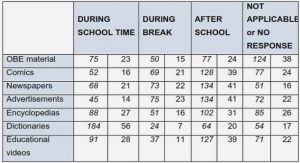Get Complete Project Material File(s) Now! »
Human activities throughout the bore al forest, especially forest harvesting, have numerous impacts on wildlife such as birds and mammals (Imbeau et al. 2001 , Thompson et al. 2003). In eastern Canada (Québec), the southern limit of the forest-dwelling caribou distribution, an ecotype of woodland caribou (Rangifer tarandus caribou), has regressed following human-settlement and populations inhabiting managed forests are declining (Courtois et al. 2003). Similar situations have been observed throughout the entire Canadian boreal forest (Edmonds 1991 , McLoughlin et al. 2003 , Schaefer 2003) and many studies hypothesized fore st harvesting as a factor accountable for this decline (Rettie & Messier 1998, Courtois et al. 2004, Wittmer et al. 2007). Different studies have focused on habitat selection by forest-dwelling caribou in order to identify its habitat needs. Oldgrowth coniferous forest has been considered essential for the conservation of this species, presumably because it allows caribou to avoid predation during calving and post-calving (Rettie & Messier 2000). Peatlands, jack pine stands and lichen woodlands are also documented as essential land-covers during calving and winter (Schaefer & Pruitt 1991, Rettie & Messier 2000), while harvested areas are avoided (Chubbs et al. 1993, Courtois et al. 2007, Schaefer & Mahoney 2007) .
Most habitat selection studies on forest-dwelling caribou were conducted at a coarse spatial scale (Bradshaw et al. 1995, Mahoney & Virgl 2003 , Ferguson & Elkie 2004). Since habitat selection is considered as a hierarchical process (Johnson 1980), attention must be paid to different spatial scales. However, few studies have included the 4th level of selection defined by Johnson (1980) – referred here as fine scale selection – and when so, they were based in most instances on variables derived from GISs rather than on habitat characteristics gathered directly on the field (Rettie & Messier 2000, Ferguson & Elkie 2005). Field surveys were more often done to assess mountain caribou fine scale habitat selection during winter (e.g. Terry et al. 2000, Johnson et al. 2001 , Mosnier et al. 2003). Such studies sampled used fore st stands and habitat characteristics along foraging tracks and underlined a selection for greatest abundances of terrestriallichens (e.g. Cladina mitis), lower basal area or canopy cover, lower snow depth or denser snow co ver, and trees bearing greater biomass of arboreal lichens (e.g. Alectoria spp.).
Our study was conducted ~ 100 km north-east of Saguenay, Québec, Canada. The study are a covered about 3,500 km2 ofboreal forest at the southern limit of the spruce-moss domain, between 48°50′- 49°20’N and 70°00′ – 700 50’W. At the beginning of the study, ~ 30 % of the area was harvested, mainly by clearcut logging. The fore st canopy of the region is mainly dominated by black spruce (Picea mariana), while balsam fir (Abies balsamea), jack pine (Pin us banksiana), paper birch (Betula papyrifera) and trembling aspen (Populus tremuloïdes) are also present in decreasing importance. The understory is composed by hypnaceous mosses and ericaceous shrubs, with sparse herbaceous plants (e.g. Cornus canadensis, Maianthemum canadense) and the vegetative layer also includes terrestrial lichens (e.g. Cladina spp.), along with bare rocks and soils. The mean annual temperature in the region is 0 oC, ranging from a maximum of 33 °C in June and a minimum of -38°C in January (Université du Québec à Chicoutimi unpubl. data). Annual precipitation varies between 1,000 and 1,300 mm, of which approximately 30 to 35 % falls as snow, accounting for 300 to 400 cm as annual accumulation (Robitaille & Saucier 1998). The elevation is 500-600 m and the relief is covered by low rolling hills, without a distinctive vegetation gradient (Robitaille & Saucier 1998).
Caribou telemetry
We captured 16 adult females from the Portneuf herd during late-winter 2004 and three during late-winter 2005, using a net gun fired from a helicopter. We fitted them with radio collars equipped with OPS receivers (Lotek Wireless Inc., Newmarket, Ontario, Canada). During the first year, four caribou died and one was lost due to collar failure. Consequently, eleven caribou were radio-tracked for two years (March 2004-2006) and three for one year (March 2005-2006). Each collar was scheduled to attempt a OPS location every 1 h or 2 h. Locations exhibiting a PD OP (positional dilution of precision) 2: 10 were deleted; remaining locations were thus considered precise approximately within 30 m (D’Eon & Delparte 2005). Habitat selection at fine scale was characterized for eight different females (i.e. five from 2004-2005 and three from 2005-2006) due to logistical and telemetry constraints. Individuals were randomly selected among those presenting no mortality or collar failure. Only females were sampled, as they have specific habitat needs (e.g. calving sites).
Table of contents :
CHAPITRE 1 INTRODUCTION GÉNÉRALE
Références
CHAPITRE II FINE SCALE HABITAT SELECTION BY FOREST-DWELLING CARIBOU IN MANAGED BOREAL FOREST OF EASTERN CANADA
Abstract
Introduction
Methods
Study area
Caribou telemetry
Land-cover types
Field surveys
Data analyses
Results
Relationships among vegetation characteristics
Fine scale habitat selection
Discussion
Food selection at fine scale
Predation avoidance at fine scale
Hierarchical habitat selection in managed boreal forest
Management implications
Acknowledgements
References
CHAPITRE III CONCLUSION GÉNÉRALE




